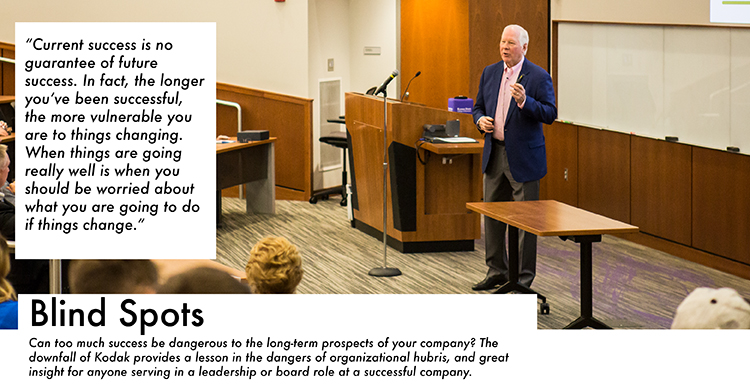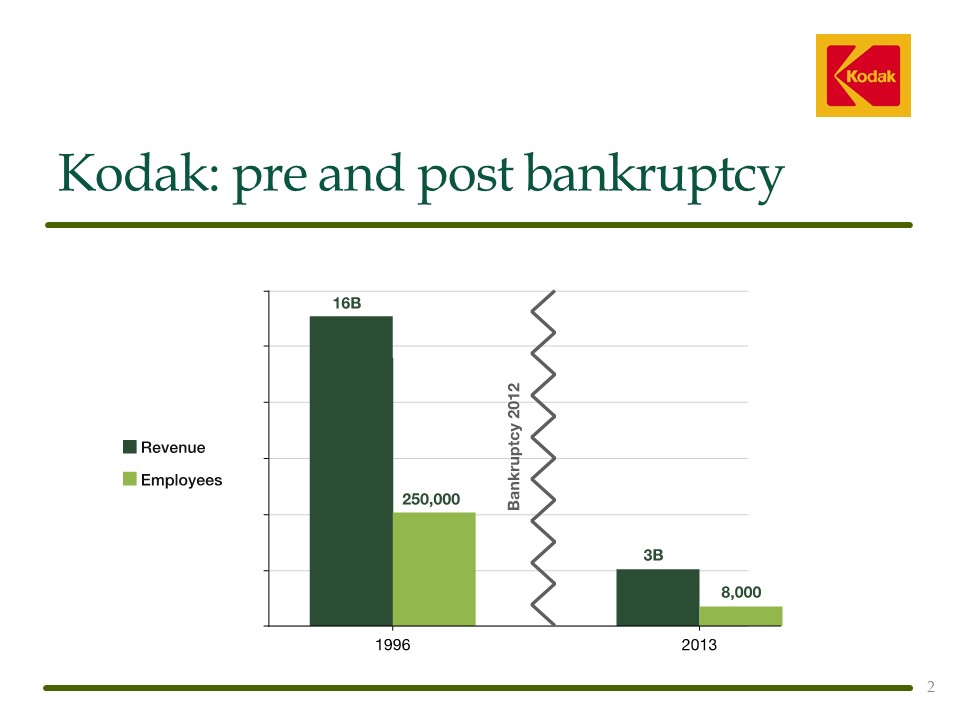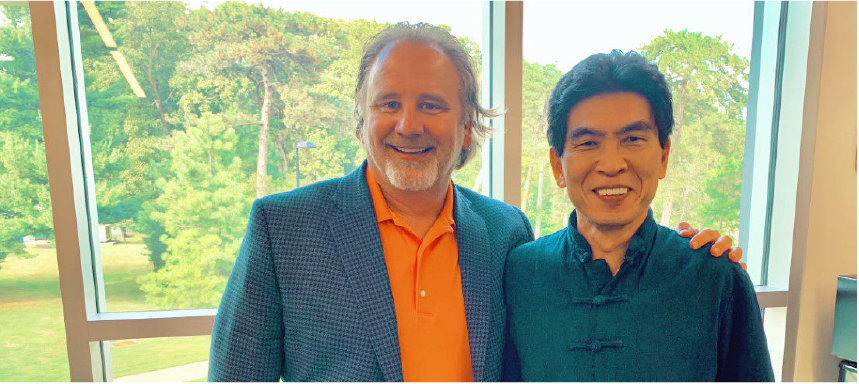Blindspots

Bill Zollars figures he has probably given his lecture on the downfall of Kodak more than 100 times now.
“I had read a Harvard Business Review article about Kodak’s decline that I didn’t think was very accurate in terms of what actually happened based on my experiences, and it made me wonder about how much due diligence really went into putting the case study together,” Zollars said. “So I decided to put together what really happened into a lecture and started presenting it at various colleges and company board meetings.”
The subject is one that is personal for Zollars, who spent 24 years in various executive positions at Eastman Kodak, including assignments in London, Toronto and Tokyo through the mid 1990’s. The lecture pulls from his experiences there, in addition to insights he gained through his time as chairman, president and CEO of YRC Worldwide (1999-2011), and in his current role serving on the boards of CIGNA, Cerner, ProLogis, Pollenware and Restone Logistics.
“This subject resonates with a lot of people in a lot of different industries because there are lessons from the Kodak story that apply to everyone,” said Zollars. “What most people think of as the genesis of Kodak’s demise is technology - fumbling the transition from film to digital. That’s probably only about 10 percent of what went wrong. A much bigger piece of the puzzle was a failure in leadership. Those are the things that are transferable to any industry - lessons about leadership, strategy, perspective, and hubris that can be present in any company or organization.”

This fall, Zollars was the featured speaker in the College of Business’ Distinguished Lecture series, which provided a unique learning opportunity for students in the Business Strategy class. The class, which is the capstone course for all business majors, did a deep dive into the Kodak case study before having the opportunity to listen and ask questions about Zollars’ first-hand account.
“The case study method is the closest thing you can get to reality in a classroom setting, and the Kodak example aligns closely with the syllabus and key ideas we are trying to teach in Business Strategy,” said Sabine Turnley, senior instructor in the Department of Management. “There is a lot you can learn from failure, and the Kodak case highlights a lot of lessons around how to do a competitive analysis of an industry and the importance of company culture.”
Company culture played a central role in Kodak’s downfall. Kodak had 100 years of success and was a monopoly for a large portion of that time. From 1988 to 1994, one kind of person helmed the company as CEO: It was always a chemical engineer who had been trained to understand film technology. A long track record of success paired with a singular focus can make it hard to adapt or evolve your business with the market, Zollars said.
“Current success is no guarantee of future success. In fact, the longer you’ve been successful, the more vulnerable you are to things changing. When things are going really well is when you should be worried about what you are going to do if things change.”
That starts at the board level in companies, where leadership needs to be constantly looking at long-term strategy and whether it needs to be tweaked. Companies need to be thinking about what is around the corner, to make sure they are ready for whatever comes.
“In most public companies, there isn’t enough time spent looking at strategy and the long-term trajectory of the organization,” Zollars continued. “Leadership can tend to get caught up in the present-day and delivering on the next quarter. Not enough time is spent at the leadership level looking at what's going on in the wider world that we should be aware of to ensure that our company is heading in the right direction.”
As a CEO, Zollars spent 50 percent of every one of his company’s board meetings focused on strategy. He’s found that if an organization doesn’t do that with a lot of intentionality, it can tend to fall into the trap of short-term thinking.
“The board at Kodak was not nearly as active as they should’ve been,” Zollars said. “You’ve got to have people on your board who represent a variety of backgrounds, experiences and skills, otherwise you develop blind spots. If nobody on the inside of the company or on the board is pushing for innovation, then your chances of just doing what you’ve always done are pretty high.”
Zollars insights extended beyond the board room as well. He also shared his advice for students as they enter their careers in more entry-level roles.
“Be on the lookout for danger signs in your organization, like resistance to new ideas, arrogance or hubris,” Zollars said. “Challenge the people above you. It’s a real trap that you can fall into when you are trying to move up the ladder in an organization to be a good team player, and not be labeled as someone outside of the normal thinking. In good companies, with good leadership, those people are really valuable. No matter where you are, don’t be afraid to speak up.”
Want to learn more? Watch Zollars' full lecture on the downfall of Kodak here.
| Involvement of industry professionals in classes like Business Strategy is a key component of the College of Business strategy now and in the future. If you have a unique perspective on a topic, or would like to find opportunities to become more engaged contact CBACorpEngagement@ksu.edu to connect with a faculty member or administrator in your area of interest. |
Win-Win Relationship
K-State's relationship with Centralized Supply Chain Services provides model for mutually beneficial collaboration between university and industry.
Corporate Partner Recognition Dinner
48 companies were recognized for the impact they have made on the College of Business through direct financial support for programs, research and scholarships.
Path to Success
The College of Business is excited to present a new podcast interview series that asks successful K-State Business alumni about the twists and turns in their career paths, and what they’ve learned along the way.


